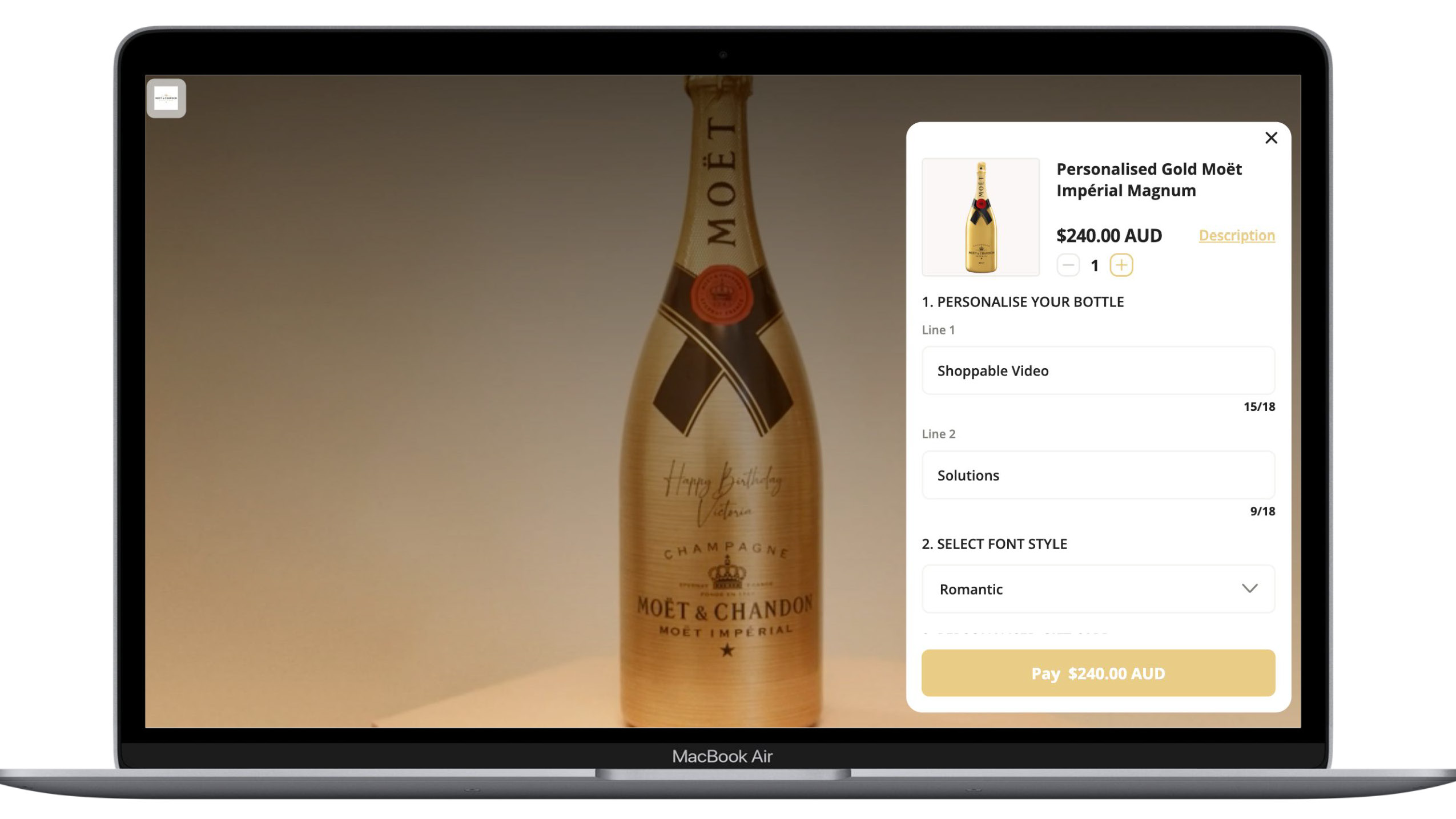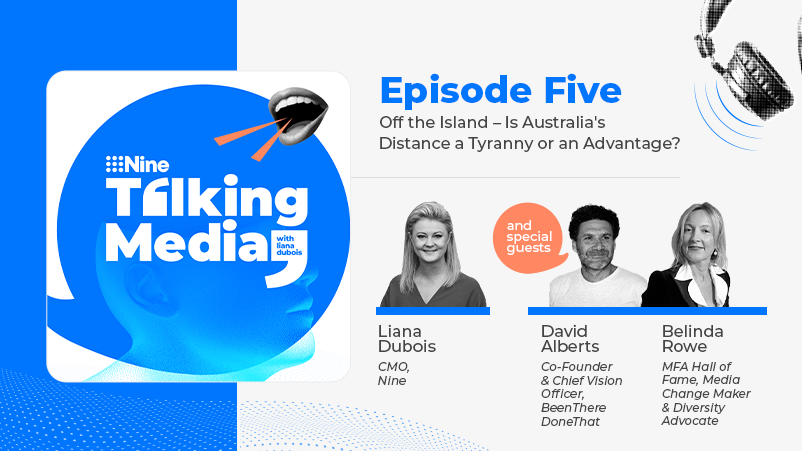'It's not a channel discussion': Can search, social or ecommerce ads build brand and drive sales? Media execs, reformed growth hackers, effectiveness advocates duke out 'double duty'

L-R: James Hurman, Rob Brittain, Pippa Leary and John James: "What gets lost here is people trying to split these things into channels – it’s really not a channel discussion. It’s how you use the channel, what message you use," says John James.
Debate on when – or even whether – short-term sales activation campaigns, or performance marketing, can build brands longer term and vice versa – aka ‘double duty’ – is running as hot as the budget knives pressed to the CFO’s whetstone. For all the industry talk at present of holding to longer term investment in brand building as the economy tightens – or priming future demand as some dub it – News Corp's Pippa Leary says "we're in a down cycle and what we're seeing everywhere is marketers just cutting their brand budgets". Leary says the money is piling into performance marketing and sales activation ad formats to drive sales at a rapid clip. But in this abridged version of Mi3's weekly podcast, a partially reformed Silicon Valley growth hacker, John James, argues the brand-performance divide is a "false construct" anyway. Marketing and ad effectiveness advocates, Rob Brittain and James Hurman, counter and weigh in on the swirling debate managing brand and performance strategies – and new challenges to marketing mantras like ESOV [extra share of voice] and the Ehrenberg-Bass "thought experiment" called the 95:5 rule.
What you need to know:
-
Mark Ritson is not a fan of the “double duty squad” – those that believe ads can build brand and drive transactions simultaneously.
-
News Corp is challenging the notion with a video ad unit that delivers on brand and embeds a "buy now" capability inside the creative that completes the transaction without heading to an ecom site – Moet tried it and sales boomed along with key brand metrics.
-
Despite many marketers rhetorically aligning to investing in brand as the economy tightens, News Corp’s Pippa Leary says “so much client spend is moving to bottom of the funnel and transactions … we’re in a down cycle and what we’re seeing is marketers everywhere just cutting their brand budgets”.
-
Partly reformed former Silicon Valley growth hacker, John James, says most people can’t describe performance marketing but think it’s primarily about channel choice i.e. search and social.
-
Performance, or sales activation advertising, James says, can build brand.
-
Previously Unavailable’s James Hurman says double duty is possible but generally too hard – split executions are easier to achieve.
-
Ad effectiveness advisor Rob Brittain agrees but labels the Moet campaign as a “rare” case of doing both at once and getting it right.
-
Listen to the full podcast debate here – it’s thought-provoking and nuanced. Black and white is out.
Double duty is difficult to do. The Moët example is quite a rare one … For me, it is a very clever sales activation. It's short term, but it actually builds on the value and leverages the equity of the brand.

The culprits: Moet and News Corp's "shoppable video" ad unit that simultaneously builds brand and drives transactions is challenging brand-to-demand orthodoxy.
Ritson's 'double duty squad"
It's unsurprising that News Corp is the protaganist in the current double duty debate after publicly launching a cheeky pushback on its former columnist at The Australian and virtual marketing professor Mark Ritson, who declared last year he's not in the "double duty squad" on ads being able to simultaneously prime interest for a product or service in the longer term and trigger a sale today.
A few months back News Corp launched a "headless" e-commerce video ad unit – or "shoppable video" – masquerading as a brand ad, designed entirely to drive a transaction. The brand-like ad – with multiple creative executions – allows online users to watch a video ad and complete a purchase of the product inside the ad unit without being scuttled off to an ecom site's shopping cart and in this instance, the publisher losing audiences off its platform. Moët tried it, offering champagne bottles with personalised messages, and sales jumped 109 per cent above forecast. Former marketer and ad effectiveness advisor Rob Brittain says Moet "is a rare example" of double duty working.
Indeed, it's how News Corp's shimmy with Ritson during its D_coded product roadshow in March started. Head of Digital Revenue and Trading, Mark Brownie, proclaimed on stage: "Marketing Science suggests you shouldn't aim for double duty in your communications, that it's not possible to deliver top of funnel and bottom of funnel outcomes all in the same execution. We are giving it a red hot crack."
Pippa Leary, News Corp's Managing director of Client Product, doubled down in this debate, arguing its ‘total commerce’ play, which aims to connect-up its various commercial products and ad formats from brand to transaction, is about giving the Murdoch empire a hedge against a market she says is hurtling towards the transactional end of the funnel.
Leary has both brand and performance data to back that claim via LVMH-owned Moët & Chandon, one of the launch partners for total commerce, which links News content and ads into brands’ ecom stacks. Via Vogue, licensed by News Corp in Australia, readers could personalise a bottle of Moët and the box with a name, and send it directly to their intended recipient – crucially for News, without leaving its publishing platform.
“It looked like a piece of native content shot by Vogue in conjunction with Moët," says leary. "It was beautifully shot. You just hit the video and it showed you how to do it. Then we took that video module … turned it into an ad unit, 15 and 30-seconds, and trafficked it both on and off platform through [video ad platform] Unruly. So you have the brand unit and the performance unit in the one campaign,” per Leary. “We’ve got these much shorter ad units going everywhere, but the crux of the story is happening in that ad unit.”
There are always outliers. I'm not sure why we would want to strive to make a single execution that does both … that is way harder than just doing two.
While describing the results as “very unusual”, Leary thinks the champagne campaign is proof that double duty is entirely possible.
“We saw some incredible performance metrics," she says. "We saw a 109 per cent increase in orders sold in September [2022] compared to [Moët & Chandon’s] forecast. We saw a 56 per cent increase in average basket size and 52.7 per cent of the customers that selected that product went the whole way through the checkout process. And we saw that that shoppable advertising drove a 37 per cent lift in footfall to the targeted liquor outlets around Australia,” says Leary.
Then the firm hired Kantar for a brand study.
“From that we saw a 38 [percentage point] unaided brand uplift from 35 to 73 per cent, which in itself is pretty amazing. We increased aided brand awareness from 91 per cent to 96 per cent … and purchase intent went from 73 per cent to 80 per cent,” per Leary.
She says the campaign also boosted sales via Moët’s direct-to-consumer site.
“It drove an average transaction value of $200, more than twice the typical Moët basket size, usually $90. And we saw shoppable video was one of the top performing channels, with a 55 per cent engagement rate versus a 17 per cent engagement rate standard.” The final conversion rate, per Leary, was 8.27 per cent.
“I’m not a marketing professional. But that jumped out as an example of a campaign that was doing a lot of heavy lifting [brand and sales-wise] in the same campaign.”
False constructs
Still, John James, a partially reformed Silicon Valley growth hacker turned growth advisor to companies up to $100m in revenues before they IPO or sell, thinks the brand-performance divide is a false construct. “I’ve never heard of non-performance marketing,” says James. And while many marketers have been handing Facebook and Google large chunks of their budgets for sales activation campaigns – trousering $8.3bn in Australian ad dollars combined – James says “most people can’t describe ‘performance marketing’ to you,” per James. That is, they don’t actually know what it is.
Most of your focus should be on getting people to buy first and then using advertising as a support mechanism or a secondary effect to then go, ‘hey, that was a good purchase. Remember us, come back for another purchase’.
Fragmented thinking around media channel planning is at least partly to blame for the double duty debate, per James. He points to hard-selling TV infomercials as a long-standing example despite most brands treating TV as brand-building channel, designed to entrench longer-term memory structures in the brain when a consumer is ready to buy in the future, as opposed to now.
“I think what gets lost here is people are trying to split these things into channels – and it’s really not a channel discussion. It's more like, are you targeting people who are in market right now with a really distinct call to action and you're measuring everything based on the sales? Or are you conscious of the fact that ultimately we're affecting people's memories – that some people are going to buy right now, some people are going to hopefully remember us, if some of the content is good, and that the channel is a conduit,” says James. “It's not everything, it's just a way to get your offer or message to market. I think that's what gets lost in this whole discussion: how you use the channel, what message you use, is really important.”
Performance and secondary brand effects
Marketers are also blowing potential credibility gains with the CFO by focusing too tightly on “obvious metrics”. Per James, there are secondary gains to be packaged into the business case and budget discussion. He thinks performance channels can actually add incremental brand gains.
“For example, Google search ads targeting a keyword like ‘buy champagne’. That’s going to attract people who are in market ready to buy. Obviously the best way you can measure that would be sales effect or some sort of digital conversion metric. But if I was using Google to target people [asking] how do you open a champagne bottle, and I was still advertising on behalf of the brand, is that performance or is that a brand thing?” asks James.
“They're not in market, they're not maybe typically wanting to buy right now, but you've still made a brand impression – maybe you serve them up some kind of creative that sticks in their memory and then they think of you fondly. And the next time they're in market for champagne at the Spring Racing Carnival or Christmas, they're going to look at the shelf at Dan Murphy's, and go, ‘yeah, I'll buy that Moët bottle’. So I think what gets lost is that secondary effect.”
James points to research – albeit by a direct mail body – that lends weight to the theory. Per Jicmail.org.uk, there are mid-digit percentage brand gains to be made at least over the medium term from old-school direct performance approach. And yes, even the digital supremo, Google, uses physical direct mail campaigns to great effect.
You are very, very challenged today [as a publisher] because so much of the client spend is moving to bottom of the funnel and transactions … We're in a down cycle and what we're seeing is marketers everywhere just cutting their brand budgets.
Suppress and test
James also suggests small and medium sized retailers are wasting money by blindly assuming performance channels will deliver leads via paid approaches, citing a “$6m ARR [annually recurring revenue] retailer” in Sydney, whose sales are split broadly 50:50 online-physical. Up until a suppression test, per James, the retailer was spending between $250,00-$360,000 annually on Facebook ads. Now it isn’t.
“They shut off [paid Facebook ads] and there was no effect,” according to James. In fact, it transpired, “they get about 50 per cent organic reach on their posts. And I think if a lot more brands did suppression testing and shut off some of these things, Google included, they would quickly figure out that a lot of this stuff doesn't actually do anything. You're just paying for junk inventory anyway. It's an interesting test to do.”
As agent provocateur in this debate – along with News Corp – James thinks marketers should be unafraid to challenge conventional wisdom more broadly in order to find growth.
“I would say that the common orthodox thinking, especially within advertising, is the reverse of what’s actually true. The common thinking is ‘we must advertise top of funnel and people will come down [the funnel] in market and buy,” he suggests.
“I think the reverse is true. I think most of your focus should be on getting people to buy first and then using advertising as a support mechanism or a secondary effect to then go, ‘hey, that was a good purchase. Remember us, come back for another purchase’.”
The counter on the counterview
That view – and James admits there are a lot of caveats – challenges pretty much all conventional marketing science theory. Rob Brittain, Australia’s marketing effectiveness answer to Peter Field and Les Binet, with whom he collaborates, can’t let it go unopposed. But first he tackles the double duty question in hand.
“Double duty is difficult to do. The Moët example is quite a rare one … For me, it is a very clever sales activation. It's short term, but it actually builds on the value and leverages the equity of the brand. They're not talking about $20 off, they're adding value to the product by being able to put your name on it. So they've done it in a really smart way. So, yes, I think double duty is possible. But it's difficult – and I think it's rare that it's done really well.”
Brittain agrees with John James that obsession with channel – medium over message or objective – is likely counterproductive. But he disagrees with James’ statement that focusing on shorter-term sales should come before broad reach brand advertising to deliver larger future-term sales.
“If you go back to first principles, the Ehrenberg-Bass stuff around how brands grow, you need to bring new people into your brand – and the simple fact is, how do you do that? You need to go broader and you need to capture people who haven't bought your brand before. Because brands don't grow by repeat purchases, they grow by light buyers coming in. That's why Ehrenberg-Bass calls it a law, because it's repeatable everywhere, in every category, in every country that they've ever looked at,” says Brittain.
If we use the same measurement tools for both building brand and driving immediate sales, then it's like judging a fish by its ability to climb a tree: It's always going to be a shit fish,”
The crux, per Brittain, is getting brands “into the room” to talk to potential customers via brand building, because otherwise how do you convert that potential demand? He points to more recent Ehrenberg-Bass work, the 95:5 rule (albeit developed with B2B categories in mind) that suggests that 95 per cent of buyers are out of market at any point in time. “[So] 95 per cent of people are not in the room with you; [marketers] often assume they are.”
Brittain is unconvinced by John James’s assertion that a search ad could potentially provide a sliver of brand building.
“It might light up what people already think about the brand, ping the memory structure … so I don’t think it has zero effect. But is it going to build anything? No.”
95:5 rule a thought bubble
The Auckland-based Partner at Previously Unavailable, James Hurman, is unconvinced about the robustness of the 95:5 rule.
“It’s not a piece of science, it’s a thought experiment," he says. "Professor John Dawes at the Ehrenberg-Bass Institute said, for example, ‘let’s imagine that businesses rolled over major suppliers of technology or banking. or whatever it is, every five years, so then they are only going to be in market for one quarter in each five year period, which is five per cent’,” per Hurman. “That is woefully unscientific for an organisation that considers itself the peak of marketing science.”
Nevertheless, Hurman agrees with the basic principle that there are likely to be more people not yet in-market than there are those immediately ready to buy – which is why trying to pack ‘buy now’ calls-to-action into brand and future demand-priming communications will likely be counterproductive. The trick is to use different brand and demand assets within the same campaign – a la News Corp and Moët.
“You've got separate executions, doing separate jobs, but working very closely together," he says. "What we know, going back to the Long and Short of It and the work that Peter [Field] and Les [Binet] have done, is that what they call ‘brand response’ campaigns, i.e. campaigns that have some [closely aligned] brand executions and some response executions … are the most effective of all,” says Hurman.
“So I think best practice is actually orienting marketing in a way that achieves both, but uses distinctly different executions to do that. And picking up on what both John [James] and Rob [Brittain] have said, we've known for a long time that brand campaigning drives some immediate sales and that performance marketing drives some brand results. So it's not the case that these things are mutually exclusive or should be considered mutually exclusive,” he adds.
“But if we want to do a great job of brand building, it's best not to use performance marketing. If we want to do a great job of driving immediate sales, it's best not to use that style of brand advertising. So I think what Pippa [and News Corp has done with Moët] is actually really best practice. It's making those two things work together in a really smart way, using technology and imagination to do that.”
Your creative calls to action are key. It has to be relative to the occasion for it to actually work. We played around with it and if it wasn't relevant, it didn't work. Because it's not just about inspiration, it's about click conversion.
Champagne dualism
News Corp’s Leary warns that linking brand and performance campaigns through the line is critical – or the whole double duty ‘bothism’ pitch risks becoming, in the inimitable words of Mark Ritson, “a shit stain”.
“Your creative calls to action are key," she says. "It has to be relative to the occasion for it to actually work. We played around with it and if it wasn't relevant, it didn't work. Because it's not just about inspiration, it's about click conversion.”
Meanwhile, “watertight” targeting and strict frequency capping are required to avoid campaign fatigue, per Leary. Plus, for all the reach of Unruly’s digital video ad network, “editorial inclusions … always come out top in terms of effectiveness – they drive all the authority, especially within Vogue,” she adds.
“So if we are going to move towards this idea of total commerce, having a set of tools that work from the top to the bottom of the funnel, all constituent parts of the campaign – the ads, the commercial content, the editorial content – they all need to be working hand in hand. Otherwise it's not going to work at all.”
Critics might argue that News, with deep editorial resources, a commercial content division and on–network and off-network ad platform partnerships, probably would take that line. But if Moët’s results can be replicated, it’ll be hard to keep arguing.
Double duty ads rarely work
Effective double duty ads – those attempting both brand building and sales activation in a single format as opposed to campaigns that cohesively but separately harness both aspects – are rare beasts, per James Hurman. Plus, they take twice as much effort, even the rubbish ones.
“There are always outliers … but why would you try to make one execution that can do both, when from an agency perspective, it's not that hard to make two executions? It's pretty simple to make a brand-focused communication and pair that with a performance-focused communication and make them look and feel the same and away you go,” says Hurman. “It's not that difficult. So I'm not sure why we would want to strive to make a single execution that did both … that is way harder than just doing two.”
Rob Brittain agrees. Try to squeeze too much into one ad, and per Ritson’s cottage kitchen argument, “it’s just an absolute mess.”
But John James thinks that view gives marketers an easy out – because they will always opt for a brand campaign, and brand metrics, over being held accountable for hard sales in short order.
James Hurman thinks that marketers carry that responsibility anyway, so they have to do both. Just not in one hit and with different metrics for each aspect.
“When we think about accountability and measurement, if we use the same measurement tools for both building brand and driving immediate sales, then it's like judging a fish by its ability to climb a tree: It's always going to be a shit fish,” per Hurman.
“Brand marketers should absolutely be accountable for driving brand awareness, familiarity, emotional connection, those sorts of things; performance marketing should be absolutely accountable for immediate sales. Any marketer's job is both of those things all of the time, that's really clear. So one thing about the debate that annoys me is people think it's one or the other, or that brand marketers are advocating for only brand marketing or performance marketers are advocating for only performance marketing,” says Hurman.
“Everyone I know is not saying that at all, they're just saying there's two different jobs to do. They're both equally important and we need to approach them and measure them in slightly different ways.”
Brittain agrees – pointing to the ‘and’ in Binet & Field’s most referenced work: “It's why they talk about ‘the long and short [of it]’. You need both in order to drive long term sustainable growth."
Reality bites
News Corp’s Pippa Leary says long and short theory is all well and good. But from a large publisher’s perspective, it doesn’t reflect current reality.
“We’ve seen the rise of short-termism – and short-termism means that so many marketers will resort to performance [advertising] because they can ‘prove’ and ROI or ROAS to a CFO,” says Leary. “We're just seeing unbridled use of short-term performance marketing without really good oversight. We're seeing really bad examples of it constantly … You are very, very challenged today [as a publisher] because so much of the client spend is moving to bottom of the funnel and transactions … We're in a down cycle and what we're seeing is marketers everywhere just cutting their brand budgets.”
Per James Hurman, while the likes of News Corp are finding ways to “get around” brand budget cutting with ‘total commerce’ double duty ads, “the bigger opportunity is to educate the business community about the reality of spending less in a recession”. He admits that argument is “much harder” to land, despite “so much bulletproof data” showing firms that maintain brand investment when others go dark recover much faster.
Unless today’s marketers win that argument, the likelihood is that CMOs picking up the baton over the next year or two will be having the same conversations – but with underinvested brands and depleted equity, and more pressure for short-term results. Which may end up rendering arguments about double duty moot.
The short and the shorter of it, anyone?



